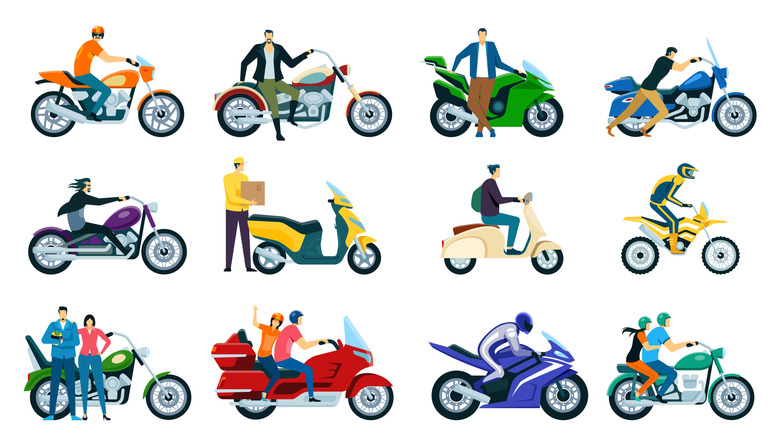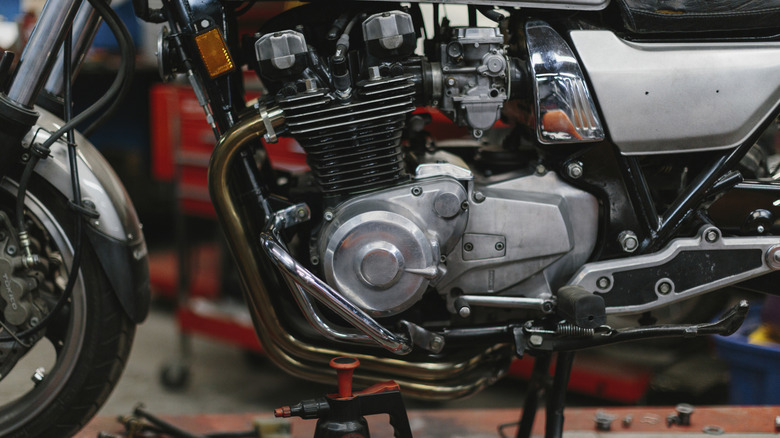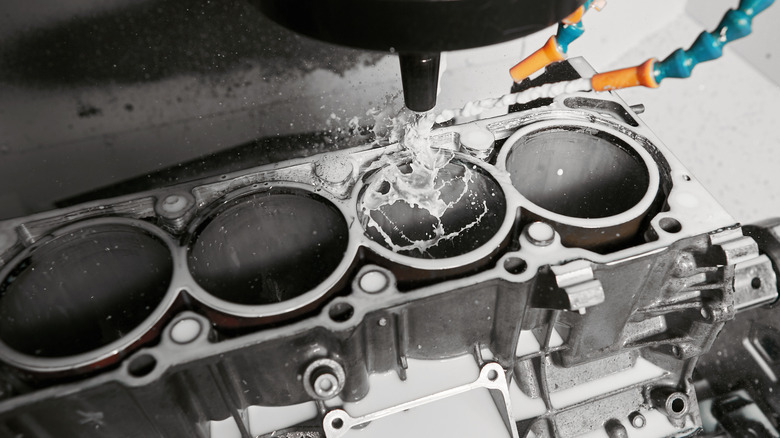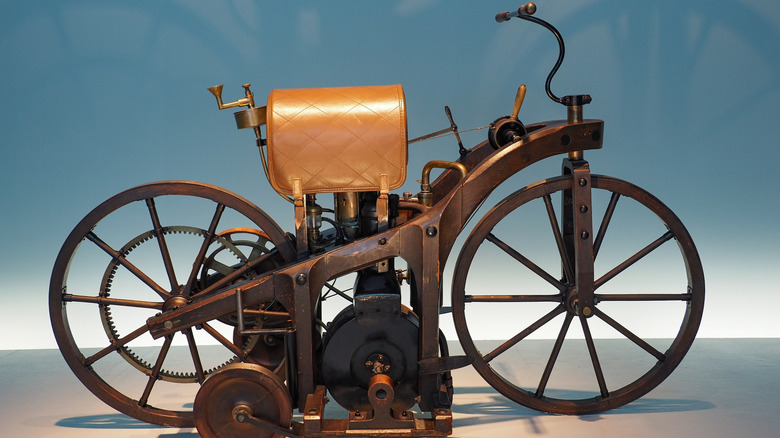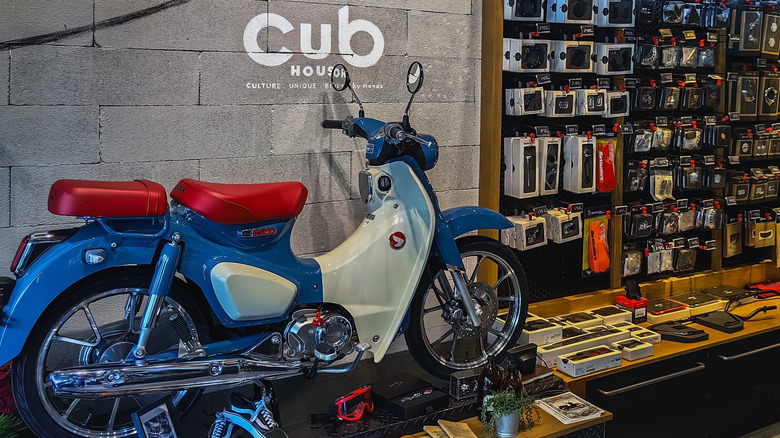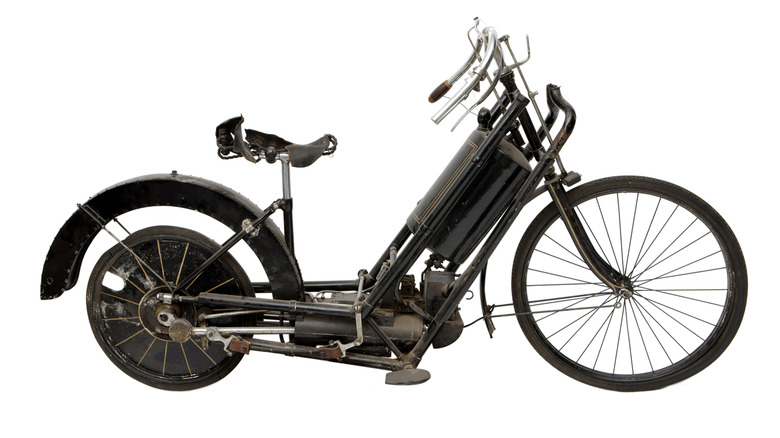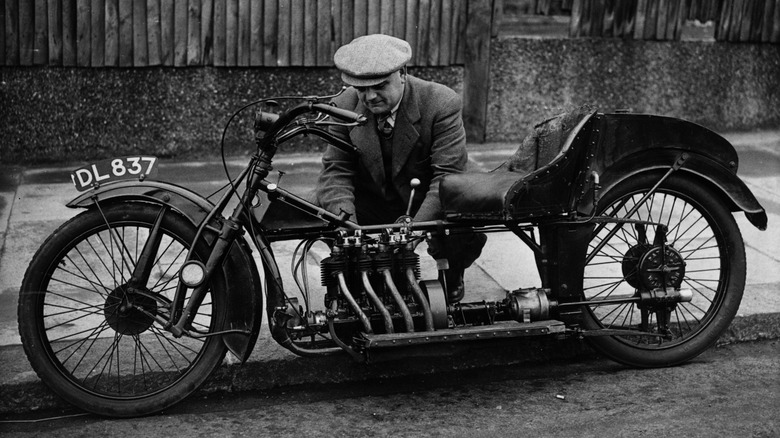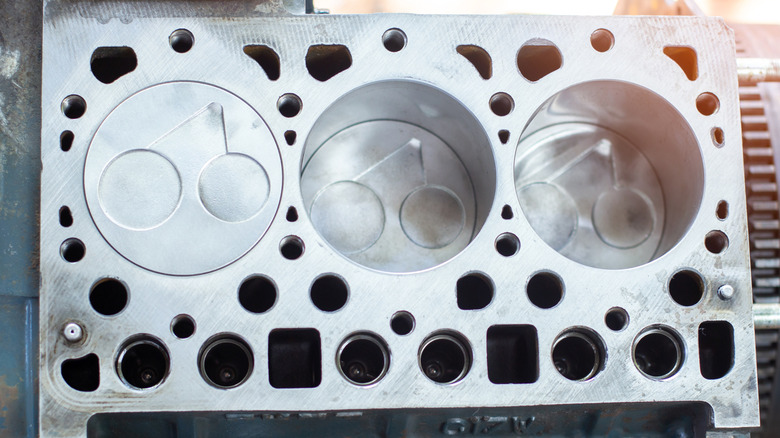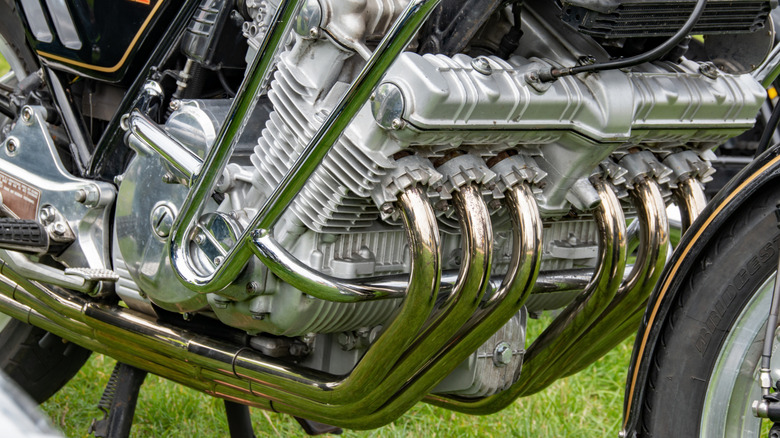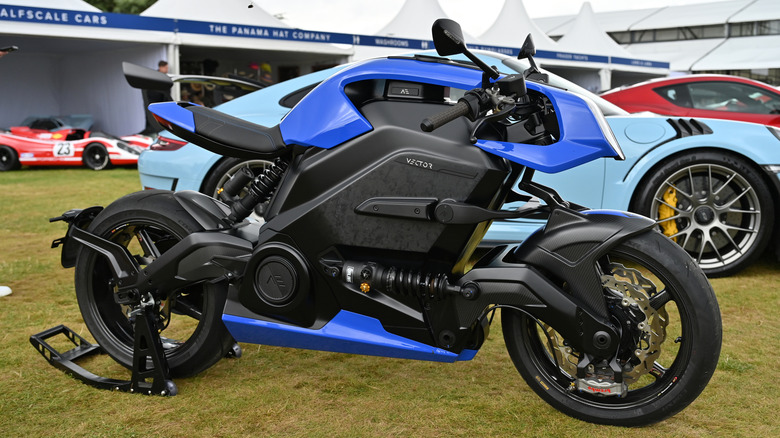Motorcycle Engine History: From Steam To Stroke, A Look At This Technology's Evolution
The Industrial Revolution's strides produced many miracles. Advancements in metallurgy and improved technological practices made the mass production of precision parts possible and, with time, accessible to the public. The potential for the new technology was limitless. A cottage economy of tinkerers and engineers took to their barns. Pioneers like Thomas Newcomen and James Watt created ever-improving steam engines.
Over time, horses fell by the wayside as people took to this new mode of transportation. Railroads began crisscrossing the countryside, steam engine trains pulling loads of people and goods. Ultimately, people wondered what would happen if they affixed one of these newfangled contraptions to personalized vehicles. The rise of another product of the revolution, the bicycle, set the stage. What would happen if one combined an engine with a bicycle? The answer to that question is history.
Some of the earliest motorcycles ran on steam, and the newest ones run on battery power. In between, over a century of internal combustion engines acquainted humanity with the unparalleled thrill of speed on two wheels. Not all motorcycle engines are created equal. They come in various shapes, sizes, and configurations designed to handle everything from short urban commutes to screaming around a track at 200+ mph.
Join us as we examine the history of the motorcycle engine from steam to stroke.
Cylinders and stroke
The number of cylinders and strokes an engine uses to create power are two of the most impactful characteristics of how a motorcycle performs and feels.
Stroke indicates how many times the piston in an engine travels up and down to complete a full ignition and exhaust cycle. In a two-stroke engine, the piston ignites the fuel in one stroke and exhausts the resulting gases in a second stroke. Two-stroke engines in road motorcycles have become a thing of the past, but not before a decent career as road-going power plants in bikes like the Kawasaki H1 Mach III, among others.
Over the past few decades, four-strokes have supplanted two-strokes as the engine of choice in street and racing motorcycles. This shift was driven by the limitations of two-stroke engines, such as their weaker power delivery and poor emissions, which made them more suitable for dirt bikes, lawn equipment, and smaller vehicles.
A four-stroke engine requires the piston to travel four times to complete a full ignition and exhaust cycle. Due to the additional parts required for this operation, these engines are bulkier but produce smoother and more even power with superior emissions. Virtually every modern street motorcycle utilizes a four-stroke engine. For more information on cylinder configuration and motorcycle types, check out our guide to everything you need to know before buying your first motorcycle.
It's not just cylinder and stroke that dictate a motorcycle's performance. How the cylinders are arranged in relation to each other also plays a significant role.
How cylinder configuration impacts power delivery
The greater the total volume of combustion space, the more powerful a motorcycle is. A larger cylinder has more boom room (also known as displacement) than a small cylinder. Multiple-cylinder bikes generate more power than singles. Motorcycles employ engines with anything from a single to 10 cylinders arranged in one of the following ways:
-
Single: Single-cylinder bikes don't need to worry about configuration because they only use a single cylinder. Lack of balance makes these engines vibrate, but the upside is they tend to be light, compact, and easy to maintain with the added benefit of making good low-end torque.
-
Inline: The cylinders are arranged in a single line and share a single engine head. Most often found in three-, four-, or six-cylinder setups, in-line engines are relatively inexpensive to produce and provide oodles of horsepower.
-
V: Cylinders take on a V-shape when viewed in profile. Harley-Davidson famously used 45-degree V-twins. Some manufacturers make 90-degree V-twins, also known as L-engines. Twin-cylinder V engines are wildly popular, but V4s and even V8s power some motorcycles. V engines excel at producing low-end torque.
-
Flat: Cylinders are arranged opposite one another. Flat engines have a lower center of gravity, are exquisitely balanced, and power high-end modern motorcycles like BMW's.
1869: Sylvester Roper steams into history on his velocipede
Sylvester Roper was born in 1823 in Francestown, New Hampshire. He grew up amid the new age of industry. Roper's cabinet-maker father encouraged him to work with his hands, and by the age of 14, he had already built stationary and locomotive engines, a testament to his early interest and talent in engineering. Roper applied his energies to everything from sewing machines to automatic fire escapes. He worked at the Springfield Armory during the American Civil War, but his most significant accomplishments would come later.
Roper's "velocipede" arrived in 1869. The hickory-framed bicycle powered by a twin-cylinder steam boiler was operated by twisting a throttle mounted to the handlebar — a convention so pure it persists to this day. Roper improved his design throughout the rest of his life until one day in 1896, shortly after being clocked doing an estimated 40 mph around a Harvard bicycle track, he slumped over in the saddle. The bike wobbled, then fell, spilling the 72-year-old Roper into the dirt. By the time aid reached him, he was dead, not from the fall, but from a heart attack.
Roper may have been among the first to enjoy the thrill of life behind the handlebars, but he would not be the last. Through the work of himself and others experimenting simultaneously, the humble invention proved to be the tip of a revolutionary iceberg that carried well into the next millennium.
1885: Gottlieb Daimler invents the first modern motorcycle
Roper's steam concept may have been futuristic, but it was not quite the future. The advent of a new technology would overtake it even before Roper's death.
Gottlieb Daimler is famous for developing the early automobile, but the German engineer also developed what is widely considered the first modern motorcycle. Like Roper's design, Daimler's 1885 Reitwagen (riding wagon) was built with a wooden frame. Unlike Roper's design, however, there was no steam involved.
Belgian inventor Étienne Lenoir developed the first commercially successful internal combustion engine in 1860. Though rudimentary and fueled by coal dust, a couple of decades of development saw such great strides that Daimler turned to it in his quest to develop the automobile.
Embarking on his journey from his garden workshop in Stuttgart, Daimler developed a gasoline-fueled internal combustion engine he dubbed the "grandfather clock." The single-cylinder, 264 cc (16 ci) engine made a whopping ½ horsepower, which drove a belt attached to a pair of outrigger wheels.
Daimler's son Paul executed the first-ever test drive of a motorcycle when he rode the Reitwagen from the Cannstatt district of Stuttgart to the outlying Untertürkheim area. Aside from a hot ignition tube that set the seat aflame, the test went surprisingly smoothly.
Daimler ultimately abandoned the Reitwagen in favor of developing the four-wheeled automobile, but the proof was in the pudding. The motorcycle was here to stay, and in time, it would outperform its inventors' wildest dreams.
From 1885 onward, single-cylinder motorcycles evolved
The single-cylinder engine gained credence in the early years of motorcycle development due to its relative simplicity. One-cylinder means relatively light engines that offer fewer issues with timing, don't require as many moving parts, and are smaller than multicylinder engines.
Daimler may have pioneered the single-cylinder with his Reitwagen, but it is far from ancient technology. More than 140 years later, the best-selling motorcycle of all time, the Honda Super Cub, uses a single-cylinder, four-stroke engine. Unfortunately, a single-cylinder is not counterbalanced, which led to their nickname: "thumps" or "thumpers" for the sound and feel they produce; single-cylinders excel at providing low-end torque, even if they have the propensity of feeling a little rough to a rider.
Combined with ease of maintenance, continuous power delivery, and good torque at the low end of the power band, these engines are popular in dirt bikes and scooters. Modern single-cylinder motorcycle engines generally range in displacement from 49 cc in the Super Cub to 450 cc in motocross bikes, but they can be much larger. During the 1990s, Suzuki put out the 800 cc single-cylinder DR Big 800S. Today, KTM and Husqvarna produce single-cylinder motorcycles with displacements nearing 700 cc.
One glaring drawback of the single-cylinder engine is that one can only coax so much power from it. Engineers began adding one or more additional cylinders and experimenting with their configuration. This quest for more power led to the rise of the twin-cylinder motorcycle.
The 1894 Hildebrand & Wolfmüller ushers in the era of the twin-cylinder
The decade following the Reitwagen, Daimler's countrymen, Alois Wolfmüller and brothers Heinrich and Wilhelm Hildebrand, introduced the first mass-produced motorcycle (pictured above) with a twin-cylinder configuration. Its four-stroke engine used a pair of side-by-side pistons to make 2 ½ hp, driving a bike that could achieve up to 30 mph.
Two-cylinder engines are complex and heavier than single-cylinder bikes, but they provide more power and the added benefit of counter-operating pistons canceling out vibration, delivering a smoother riding experience than a thumper.
In 1896, Carl Benz, closely associated with Gottlieb Daimler through the 1926 merger of their companies, made history by introducing an early flat-twin engine. Sometimes called a pancake or boxer engine, a flat-twin incorporates horizontally opposed cylinders, but that isn't the only way to set up a twin.
Parallel twin-cylinder engines are similar to the Hildebrand design in that the cylinders operate side by side. The word "parallel" comes from the fact that the pistons operate parallel to each other, not the ground.
The V- or L-twin is another popular configuration. Daimler struck again in 1889 by patenting an engine in which two cylinders operated with a 20-degree separation. This engine was initially used for boats, but the British Princeps Autocar Company produced an early V-twin motorcycle in 1902. The twin is widely used today. Harley-Davidson famously used 45-degree twins for decades. In 1970, Ducati introduced a two-cylinder labeled the L-twin for the 90-degree angle between the cylinders.
V-twins have developed enormously since Daimler's initial effort, becoming one of the most popular motorcycle engine types still in modern use.
Early four-cylinders began appearing around 1905
The first four-cylinder motorcycle engine set the burgeoning motorcycle world abuzz in 1905 when Belgian producer FN put the FN Four on the market. FN arrayed the engine along the motorcycle's axis to facilitate a shaft-driven rear wheel.
Less than 10 years later, a glutton for punishment named Carl Stearns Clancy undertook a world tour on a Henderson Four. Clancy made it 18,000 miles before the outbreak of World War I stopped him, but the trip drew great publicity. Balanced, durable, and relatively inexpensive to manufacturers, the four-cylinder had merits, but it would take decades to reach its full potential.
The 1969 Honda CB750 sported a transverse-mounted four. Considered by many to be the first superbike, the power plant set the standard for performance motorcycles for years. The last three fastest-producing motorcycles, the Kawasaki Ninja H2R, the Suzuki Hayabusa, and the Honda Blackbird, all used four-cylinder engines, as most modern MotoGP bikes do.
In-line fours sacrifice low-end performance for horsepower high in the revs. Still, some manufacturers have developed V4 engines for those who want torquey power in their four-cylinder. The Ducati Panigale V4 uses one, as did the recently discontinued Yamaha VMAX muscle bike.
Four-cylinder motorcycles, with their enduring appeal, are a ubiquitous presence in the motorcycling world. Powering everything from commuters to race bikes, the four remains a capable and popular engine in some of the world's fastest motorcycles.
From the 1930s onward, three-cylinder engines do it differently
Three-cylinder engines seemed a logical next step after the twin, but technical difficulties kept them out of the game until the 1930s. Italian producer Moto Guzzi was the first to introduce a triple-cylinder bike in the aptly named 1932 model Tre Cilindri. The Tre Cilindri didn't last long, but thanks to mid-century bikes like the Triumph Trident (in production between 1968 and 1975), the three-cylinder is alive and well today.
The odd number of cylinders causes the motor to lack balance, which translates to vibration and rough running, especially at low speeds. Builders addressed these issues with counterweights or crankshaft balancing, but these solutions add weight and complexity to the operation.
Nonetheless, triples have advantages, including a more compact design and a good torque-to-displacement ratio, and manufacturers have taken these advantages to heart. They can be found in modern bikes like the Yamaha MT-09, the Triumph Street Triple, and the MV Agusta Brutale, among others. The Moto2 series exclusively employs triples for racing.
The bigger the better: the 1970s sees six and more cylinders in production bikes
Honda's six-cylinder CBX1000 turned heads when it hit the streets in 1978. Born from Honda's experiments with the six-cylinder RC165 race bike in the 1960s, the inline, transverse-mounted six design was a bold step toward bringing race-inspired technology to the masses. Not to be outdone, Kawasaki also joined the six-cylinder roster with its Z1300 in 1979.
Both Honda and Kawasaki deployed transverse-mounted inline six-cylinders. With excellent cooling properties and plenty of perfectly balanced power, this seemed like a good idea on paper. However, these engines suffered from being overly broad, preventing riders from getting super low in the corners. Mechanical complexity and weight also contributed to the degradation of the inline six configuration.
The transverse inline six didn't survive long on street bikes, but other configurations have thrived. The 2025 BMW K 1600 employs an inline six situated longitudinally (along the lines of the bike). Honda uses a well-regarded flat six-cylinder in its premier luxury cruiser, the Gold Wing.
Some specialty manufacturers like Boss Hoss make a point of employing Chevrolet V8s intended for cars. The Dodge Tomahawk concept vehicle used an 8.3-liter V10 from the Viper. It technically had four wheels, but so did Daimler's Reitwagen.
Six-cylinder motorcycle engines are rare in new production bikes but excellent for certain applications.
Battery power is the past and future of motorcycling
Electric power, a force that continues to move closer to center stage, has already begun its journey into the world of motorcycles. Over a dozen electric motorcycle brands have recently emerged, each with its own unique technology. But it's important to remember that the electric motorcycle, in all its modern forms, is as old as the motorcycle itself.
On April 28, 1869, Joseph Marie filed for a patent for the first known electric motorcycle. Whether he actually constructed such a motorcycle is unknown, but the concept had arrived. For years, electrical power vied with internal combustion for dominance. Batteries ultimately lost the battle, but the war is not yet over.
Despite the reluctance of most major manufacturers to fully commit to producing electric motorcycles, the future looks promising. The potential environmental benefits, near-silent operation, and impressive power numbers combined with the relatively light weight of a motorcycle offer a glimmer of hope for a more sustainable future of transportation, though purists may decry the death of internal combustion.
The next wave of motorcycle development is impossible to predict. Just as they did at the outset of the motorcycle era, tinkerers, engineers, hobbyists, and dreamers will continue to experiment with the beloved motorcycle and its many engines, keeping the future of this industry exciting and uncertain.
